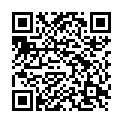|
|
|
| Module code: DFBI-341 |
|
|
2P (2 hours per week) |
|
3 |
| Semester: 6 |
| Mandatory course: no |
Language of instruction:
German |
Assessment:
50 % of the marks acquired in the practical lab work, 60-minute Written examin.
[updated 08.05.2008]
|
DFBI-341 (P610-0198) Computer Science and Web Engineering, Bachelor, ASPO 01.10.2018
, semester 6, optional course
PIB110 (P221-0014) Applied Informatics, Bachelor, ASPO 01.10.2011
, semester 1, mandatory course
|
30 class hours (= 22.5 clock hours) over a 15-week period.
The total student study time is 90 hours (equivalent to 3 ECTS credits).
There are therefore 67.5 hours available for class preparation and follow-up work and exam preparation.
|
Recommended prerequisites (modules):
None.
|
Recommended as prerequisite for:
|
Module coordinator:
Dipl.-Ing. Wolfgang Pauly |
Lecturer: Dipl.-Ing. Wolfgang Pauly
[updated 06.03.2017]
|
Learning outcomes:
Students will learn how to make effective, professional use of the UNIX operating system and, in particular, how to use it as a programming environment.
[updated 08.05.2008]
|
Module content:
UNIX fundamentals
- Starting and shutting down the computer, runlevels, .profile-files
Overview of desktop environments for UNIX
- CDE, KDE, GNOME
Shell as a command interpreter
- Commands, metacharacters, quoting, I/O concept, the pipes concept, shell variables, command line parsing, command grouping, sub-shells
Differences between selected shells
- sh, bash, ksh, csh, tcsh
Editors
- vi, vim, ed, sed
Access authorization and data security
- chmod, chgrp, chown, umask
The twenty most important UNIX commands
- ls, mkdir, rmdir, mv, cp, rm, ln, ...
Shell programming, shell scripts
- Syntax, variable substitution, positional parameters
Control structures, built-in commands, arithmetic expressions, regular expressions
Program development tools in the UNIX environment
- Make, Debugger and Compiler
UNIX network utilities
- The Berkley remote utilities (‘r* utilities’) ruptime, rwho, rusers, rsh, rcp
and rlogin and their application
Standard network tools telnet, ftp, finger, ssh, ping, traceroute and their application
[updated 08.05.2008]
|
Recommended or required reading:
GULBINS: UNIX System V.4, Springer, 1995
POWERS, PEEK, OREILLY, LOUKIDES: Unix Power Tools, OReilly, 2002
ROSENBLATT: Learning the Korn Shell, OReilly, 1995
STAPELBERG: UNIX SYSTEM V.4 für Einsteiger und Fortgeschrittene, Addison-Wesley, 1995
[updated 08.05.2008]
|

